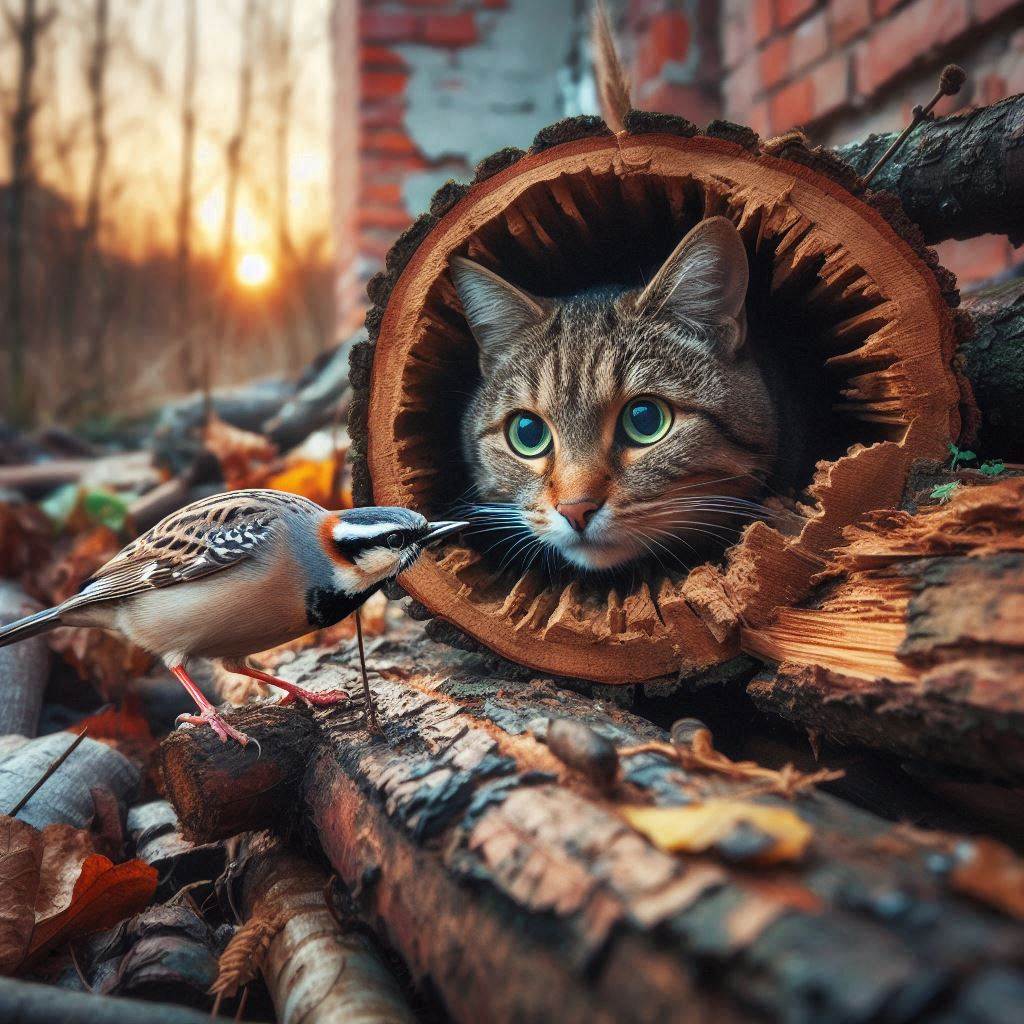Imagine a cat who thinks he’s a miniature lion, ready to defend his territory from any intruder, even if it’s just an innocent lizard. In fact, behind those adorable whiskers hides an infallible hunter! And while we cuddle and spoil them, they continue to live their double life as superheroes and garden supervillains!
The evolving role of domestic cats
Cats have been identified for centuries as effective controllers of rodents and other vermin.
Their hunting skills have been appreciated since ancient times, with evidence dating back to the ancient Egyptians, who also worshipped them as deities.
During the Middle Ages, despite their association with witchcraft, cats were still kept in homes to keep the rat population under control.
This practice has continued over time, with cats maintaining an important role on farms and in homes to protect food supplies from pests.
Nowadays, cats are mainly domesticated and accompany our lives as pets.
But these animals, both domesticated and stray, have a significant impact on wildlife.
They hunt birds, small mammals, reptiles, amphibians and insects, contributing to the decline in populations of these species; in some cases, their prey includes endangered and protected species.
This behaviour can lead to a decrease in populations of native species and, in some cases, contribute to the extinction of vulnerable species.
Domestic cats and wildlife
A study conducted at the Centro Recupero Animali Selvatici (CRAS) in Vanzago analysed the effect of domestic cats on hospitalised wildlife.
The results show that many wild animals are seriously injured due to predation by cats.
In fact, the domestic cat is considered one of the world’s 100 most invasive species and is responsible for about 14% of extinctions.
As natural predators, when left free to roam, they hunt and kill around 2,000 animal species including birds, reptiles, amphibians, mammals and insects.
This problem is particularly acute on islands, where the endemic fauna is most vulnerable. Moreover, these felines can transmit diseases to wildlife, further contributing to the decline of populations.
By monitoring the daily routines of domestic and feral cats with small cameras, American scientists have discovered that some 84 million domestic cats kill between 4 and 18 birds and between 8 and 21 small mammals per year each.
Wild cats, on the other hand, can kill up to 46 birds and 338 small mammals each year for subsistence.
These numbers, in areas with a high concentration of cats, could put local wildlife populations at serious risk.
Measures to mitigate cat predation
In addition to a rich and balanced diet, which reduces hunting instincts, to limit the negative effects on wildlife, it is important to adopt some individual responsible management measures, such as:
- Keeping cats indoors:
Limiting the time cats spend outdoors, especially during the bird breeding season (March to September), can significantly reduce predation.
Breeding birds are particularly vulnerable during this period.
- Environmental enrichment:
Providing games and activities that stimulate the cat’s hunting instinct inside the house can reduce the desire to hunt outdoors. Games such as food puzzles, spring toys and interactive play sessions with the owner are very effective.
Cats like to climb and observe their environment from above; providing shelves, cat trees and other vertical structures can help fulfil this natural need.
- Sterilisation:
Neutering is essential to control the feline population; it also helps preventhybridisation with wild cats, which can compromise the genetic purity of wild populations.
This is particularly important in areas where there are native wildcat populations.
- Specific collars:
- Coloured collars, such as the ‘Birdsbesafe’, are designed to make cats more visible to birds, thus decreasing their hunting success. They exploit the birds’ colour vision to warn them of feline danger;
- Reflective collars increase the cat’s visibility at night and reduce the risk of traffic accidents.
These collars make no sound, so they do not cause stress to the cat.
Wildlife protection and cat welfare are not mutually exclusive goals, and with the right strategies we can achieve both.
Play for the planet!
